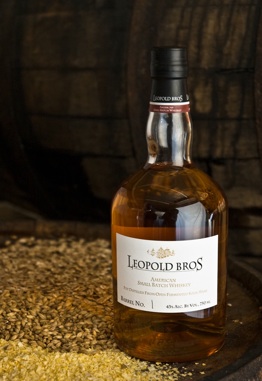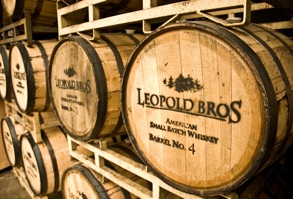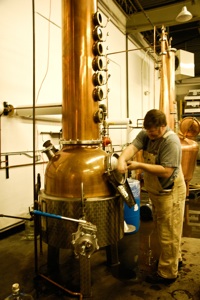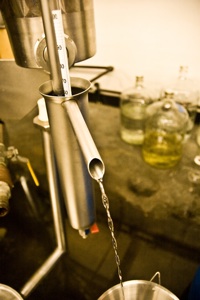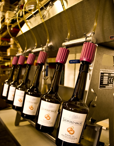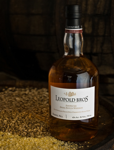Following Prohibition, industrialization and mass marketing changed both the character and the crafting of American whiskey. With our whiskey, we have turned back the clock and revived the traditions that were handed down to us from the pioneers of American distilling.
Whiskey production was originally handled by either farmers or millers as an admittedly delicious way to store the remainder of the year’s corn and rye harvest. At the time, whiskey was used as a currency, much in the same way the apple brandy was used. It was as good as cash. Barter was king in those days, and whiskey was a valuable commodity, particularly in rural areas.
We begin by fermenting a traditional sour mash of corn and rye at colder temperatures, but without the aid of refrigeration. Fermentation takes more time this way, but results in a softer whiskey and develops subtle flavors such as vanilla, pear, rock candy, and raspberry.
Unlike modern day continuous stills that flash boil the mash in a few seconds, we take an entire day to distill the mash in a small batch copper pot still to extract fuller and rounder flavors from the corn and rye. This is a very important step that is no longer part of any major American whiskey distiller’s production regime. The difference between boiling corn and rye mash for a few seconds and six hours can be likened to the difference between slow roasting a pig on a spit, and simply cooking it in a conventional oven. Both add heat, true, but the lengthy boil will extract flavors that cannot be replicated in a continuous still which simply flash boils the mash. While there is nothing inherently wrong with using a continuous still, we prefer the mouthfeel of a pot distilled whiskey which, in our opinion, cannot be replicated by using a continuous still.
After distilling this flavorful result a second time to refine and focus the flavors, we barrel the whiskey at 98 proof, a common practice in the 1800s, rather than at the post-Prohibition, Industrial Age standard of 125 proof. This enables more whiskey to come into contact with the barrel, allowing the mild brown sugar and molasses notes that come from the charred barrels to shine through.
As a result, we hope to bring back some of the nuance and subtlety of a refined whiskey rather than allowing people to taste only barrel, barrel, and more barrel. With today’s modern industrial production methods, in some whiskies you can no longer taste the distillate or the raw materials that crafted the distillate. Now, there’s nothing wrong with this method of whiskey production (we love 8 year old Bourbons, too), but we feel that fans of whiskey should also have access to traditionally prepared whiskey where the raw materials and fermentation processes are emphasized, rather than the work of the cooper.
We hand bottle each unfiltered barrel individually, and number each bottle according to the barrel from which it came, producing only 240 bottles per batch.
When you pop the cork, you will immediately notice the unmistakable aromas of corn and rye that were the hallmarks of many of the traditionally distilled pre-Prohibition whiskies. We hope you enjoy this whiskey as much as we enjoyed crafting it.
